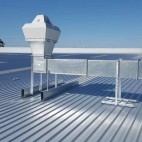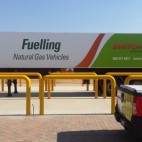With future tariff increases and ongoing energy insecurity, experts urge South Africans – businesses and private individuals – to investigate renewable energy (such as solar) as an electricity solution.
Wind energy has great potential, too, but the sun’s power seems to be greater. To make solar mainstream, however, government needs to adopt a more strategic framework.
“If South Africa’s solar programme is about compliance only and aimed at making the global community happy, rather than wanting to tackle the country’s energy problems, the authorities will have to work a lot harder to turn solar into a serious solution,” says Jigar Shah, one of the world’s best-known solar experts.
Stressing that a strategic mindset of leadership will make the bidding process for and rollout of solar projects less time-consuming and more efficient, therefore attractive to investors.
He adds: “South Africa has to really believe in the solar industry to make solar work”.
Based in Washington DC, Shah was the first chief executive of the Carbon War Room. This global organisation was founded by Richard Branson and deals with curbing climate change.
Shah has kept a close eye on South Africa’s solar policy for the past years, and not without reason: with 2 500 hours of sunshine per annum, equalling 25% of the year including nightly hours, South Africa is the world’s third best solar location after the Sahara and Australia’s State of Queensland.
Additionally, our radiation output is said to be stable, predictable and of great quality.
According to Dick Berlijn, managing director of Pretoria-based solar electricity development firm, Subsolar Energy, the variable of South Africa’s solar radiation is around 3%: “On good days, solar radiation in South Africa is of a 100% quality and 97% on bad days. These conditions are extraordinary.”
This means the sun is more predictable than, for instance, wind – thus more economically viable.
This and an increased demand for power, looming price hikes, and an insecure energy network make South Africa a potential solar market leader – and incredibly attractive in the eyes of foreign investors.
“South Africa is seen as one of the world’s solar energy market leaders because of the abundance of sunshine and space,”says Edwin Koot, CEO of international solar energy think tank, Solar Plaza.
“South Africa has plenty of space to build large solar plants, for instance up north. One hectare can produce one megawatt of installed capacity.”
While everyone can benefit from solar, Berlijn says that it is a good solution to medium businesses in particular:
“Many of such businesses, including supermarket branches, agricultural businesses and retailers are paying some of the highest rates and have no political power to demand better tariffs – unlike, for instance, the mining sector.”
That said, one of solar’s largest deterrents is its image of being expensive.
It, however, will not take much longer before one kilowatt per hour of solar electricity is cheaper than the equivalent of conventional power.
“Taking into account future tariff hikes and decreasing solar prices, we predict that in three to five years from now, sun-generated electricity will be cheaper than conventional energy in South Africa,” Berlijn says.
In quite a few parts of the world this is already the case, even without government subsidies.
In the United States, solar energy without government subsidies has become cost-effective to 20% of Americans.
“This was 0% four years ago,” Shah says, adding that apart from solar panels becoming more affordable, rising electricity prices have played a role in the above-mentioned development as well.
“Electricity prices have doubled in the US since 2000 while the demand for power has increased. These trends will continue, making solar even more economically viable.
"The 100kWp system provides 25% of the venture’s electricity needs. As a result, 4 000 fewer tonnes of carbon will be emitted into the atmosphere in the next two decades,” explains CEO Alexi Romano of The Romano Group, the installing company.
“Although there is an initial capital investment, the cost of solar power over the medium- to long term is cheaper than utility-provided power, even without subsidies,” Romano says, adding that depending on the geographic location and site conditions, the payback period for Romano rooftop systems is four to eight years.
What is most important, says Koot, is the fact that solar prices are stable: “Solar prices are pretty much fixed and are not dependent on Eskom prices hikes. They are more likely to drop than to increase, due to dropping panel prices.”










